 Gas stations have long been a familiar sight on American roadways, serving as crucial pit stops for motorists on their journeys.
Gas stations have long been a familiar sight on American roadways, serving as crucial pit stops for motorists on their journeys.
However, the gas stations we encounter today bear little resemblance to their early counterparts from the 1920s and 1940s.
In this article, we delve into the past through a captivating collection of old photos, providing a fascinating glimpse into the appearance and atmosphere of gas stations in the United States during these transformative decades.
During the early 1920s, gas stations were still in their infancy, evolving alongside the burgeoning automobile industry.
Unregulated and modest in scale, these stations comprised small buildings and a single pump. As unassuming as they were, they played a vital role in providing essential services to motorists. Tire repairs, lubrication, and the sale of oil, batteries, and tires were among the primary offerings.
The architectural styles varied, ranging from quaint wooden structures to more utilitarian designs, but all exuded a sense of practicality and functionality.
These early gas stations often blended into the surrounding landscapes, showcasing an organic integration with their communities.
.png)
The place is a Texaco Gasoline Filling Station (primarily they filled gas tanks). 1920s.
As the automobile industry continued to flourish, gas stations underwent significant changes in the 1940s. The influence of modernization and streamlined design became evident, with the emergence of more recognizable gas station motifs.
Art Deco elements, vibrant signage, and eye-catching canopies adorned the stations, reflecting the spirit of innovation and progress.
The first known filling station was the city pharmacy in Wiesloch, Germany, where Bertha Benz refilled the tank of the first automobile on its maiden trip from Mannheim to Pforzheim back in 1888.
Shortly thereafter other pharmacies sold gasoline as a side business. Since 2008 the Bertha Benz Memorial Route commemorates this event.
.png)
In case you missed it, this is a Texaco station. 1920s.
The world’s first purpose-built gas station was constructed in St. Louis, Missouri, in 1905 at 420 South Theresa Avenue.
The second station was constructed in 1907 by Standard Oil of California (now Chevron) in Seattle, Washington, at what is now Pier 32. Reighard’s Gas Station in Altoona, Pennsylvania claims that it dates from 1909 and is the oldest existing filling station in the United States.
Early on, they were known to motorists as “filling stations”. These filling stations were known to wash your windows for free.
.png)
Land wasn’t at a premium then like it is now. Note the wide open layout and the nice row of little trees. This was a Texaco Gasoline Motor Oil Service Station. The concept had become a “service station”, which included more than just filling your tank. They even filled it FOR you, no “self-service” needed. 1920s.
The first “drive-in” filling station, Gulf Refining Company, opened to the motoring public in Pittsburgh on December 1, 1913, at Baum Boulevard and St Clair’s Street.
Prior to this, automobile drivers pulled into almost any general or hardware store, or even blacksmith shops in order to fill up their tanks.
On its first day, the station sold 30 US gallons (110 L) of gasoline at 27 cents per gallon (7 cents per liter). This was also the first architect-designed station and the first to distribute free road maps.
.png)
Looks like an early “mall”. At one location, you could fill up your tank, get a loan so as to look prosperous with a new suit, and have a meal while your spark plugs were changed. 1920s.
The majority of filling stations are built in a similar manner, with most of the fueling installation underground, pump machines in the forecourt, and a point of service inside a building.
Fuel is usually offloaded from a tanker truck into each tank by gravity through a separate capped opening located on the station’s perimeter. Fuel from the tanks travels to the dispenser pumps through underground pipes.
Older stations tend to use a separate pipe for every kind of available fuel and for every dispenser. Newer stations may employ a single pipe for every dispenser.
This pipe houses a number of smaller pipes for the individual fuel types. Fuel tanks, dispenser and nozzles used to fill car tanks employ vapor recovery systems, which prevents releases of vapor into the atmosphere with a system of pipes.
.png)
Ford Sales and Service. Look at all those Model T’s. 1920s.
In the past, filling stations in the United States offered a choice between full service and self service. Before 1970, full service was the norm, and self-service was rare.
Today, few stations advertise or provide full service. Full service stations are more common in wealthy and upscale areas. The cost of full service is usually assessed as a fixed amount per US gallon.
The first self-service station in the United States was in Los Angeles, opened in 1947 by Frank Urich. In Canada, the first self-service station opened in Winnipeg, Manitoba, in 1949. It was operated by the independent company Henderson Thriftway Petroleum, owned by Bill Henderson.
In New Jersey, filling stations offer only full service (and mini service); attendants there are required to pump gasoline for customers. Customers, in fact, are prohibited by law from pumping their own gasoline.
.png)
Dome Gas. You better try it ’cause “It’s Better”. It better be good since they want 23 cents a gallon for it. 1920s.
.png)
Lemans’ Tire Shop. Barney Oldfield tires only $9.99 each. Sounds kind of expensive to me. Note the water can by the side of the road and the barricades around the trees. I guess people just drove up on the sidewalk to get their tires and the trees were in the way. 1920s.
.png)
Here we have Super Motor Fuel. 1920s.
.png)
Note the name of the station “Toot-An-Kum-In”. King Tut was big news in the twenties so why not capitalize on it. This is a really modern looking station with the full roof and multiple islands of pumps. AMOCO Gas (still around today) but what does “filtered” mean. Obviously they consider other gas to be “dirty”. 1920s.
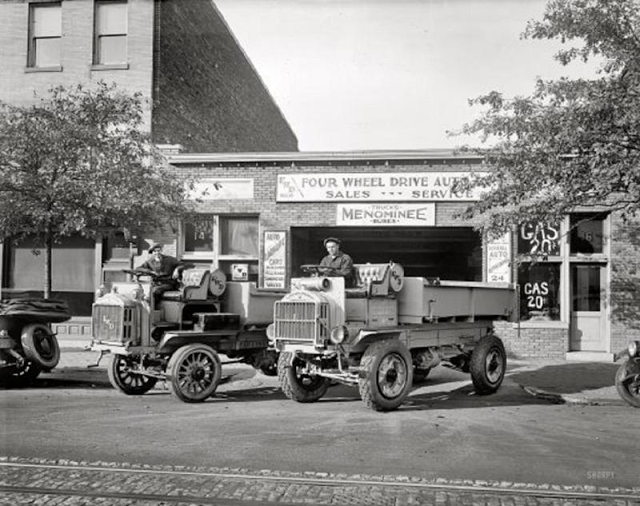.png)
Four Wheel Drive Autos sales and service. The SUV’s of the 20’s. 4WD gas is only 20 cents a gallon. 1920s.
.jpg)
Simplicity itself. No name gas and motor oil for 20 cents a quart. 1920s.
.jpg)
Self service back then to. 1920s.
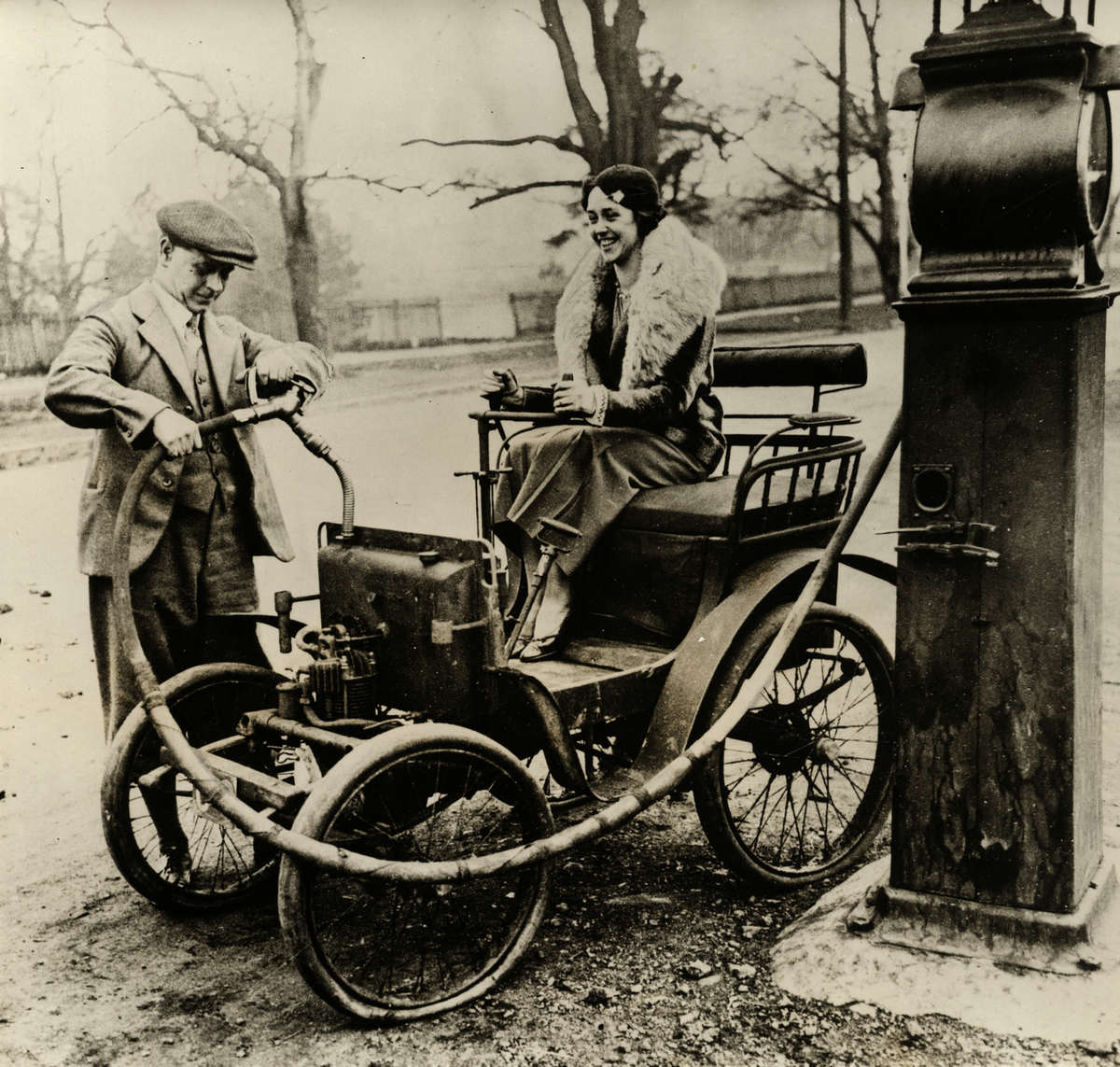
Exploring the Past: Vintage Photographs Reveal the Charm of Gas Stations in the US During the 1920s and 1940s_US Old Stories
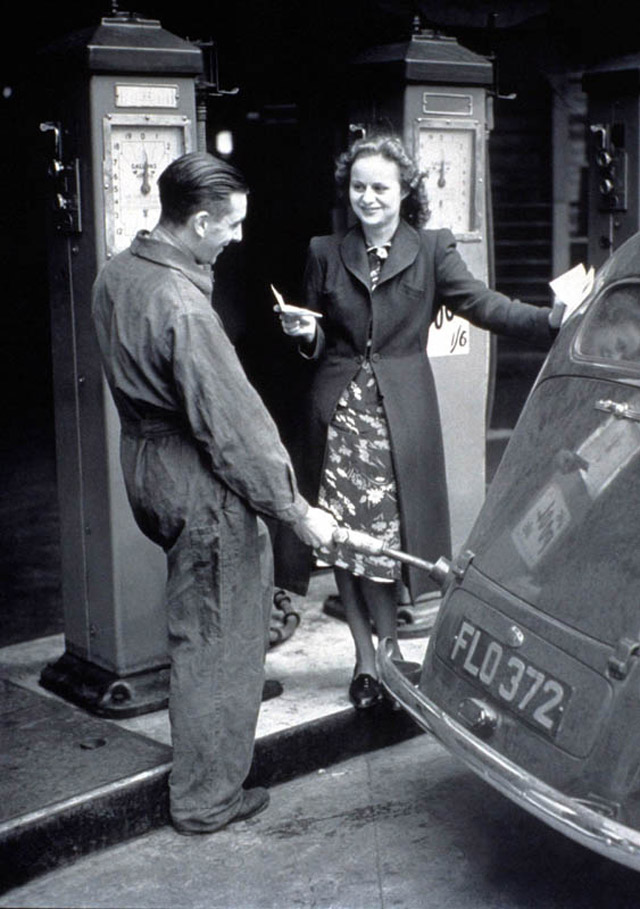
Exploring the Past: Vintage Photographs Reveal the Charm of Gas Stations in the US During the 1920s and 1940s_US Old Stories

Exploring the Past: Vintage Photographs Reveal the Charm of Gas Stations in the US During the 1920s and 1940s_US Old Stories
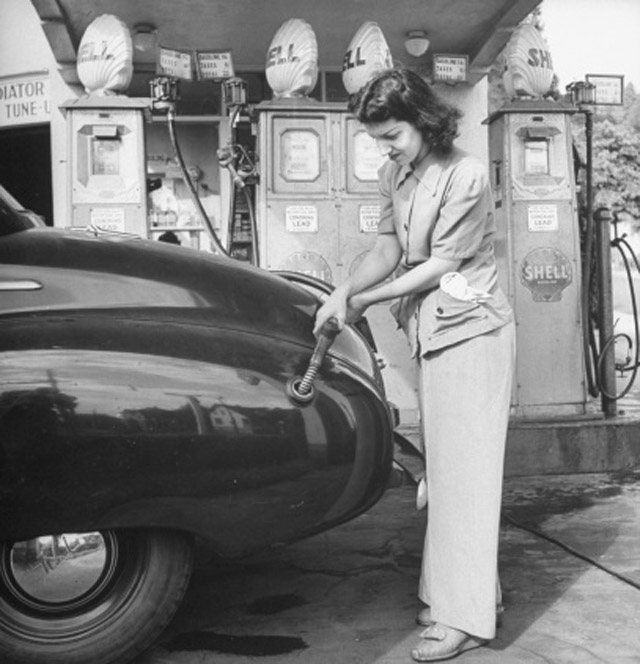 Exploring the Past: Vintage Photographs Reveal the Charm of Gas Stations in the US During the 1920s and 1940s_US Old Stories
Exploring the Past: Vintage Photographs Reveal the Charm of Gas Stations in the US During the 1920s and 1940s_US Old Stories
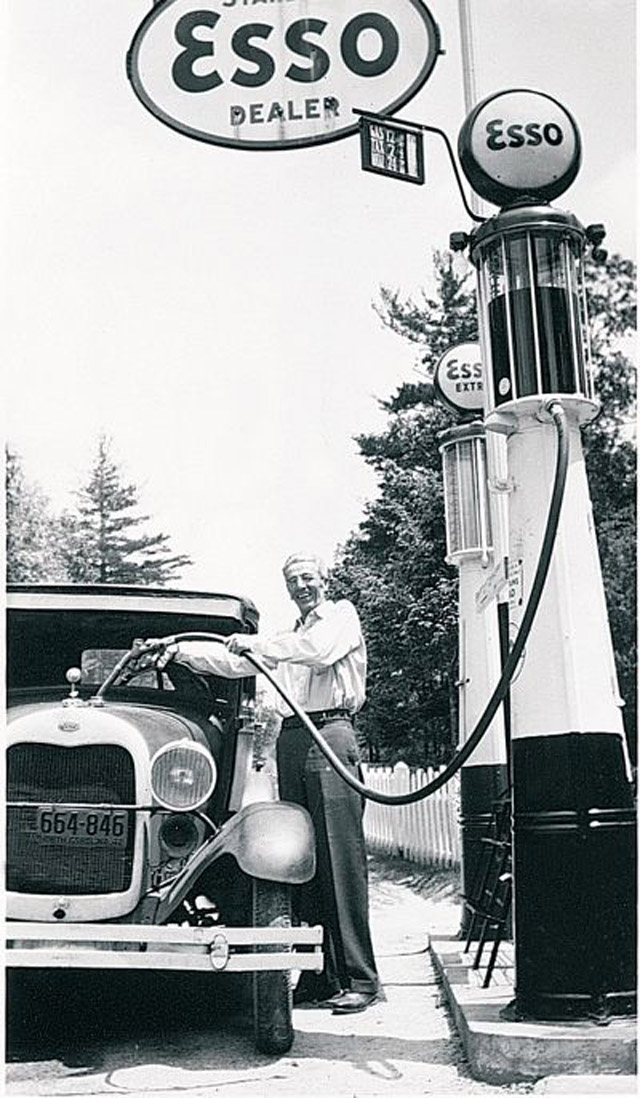
Exploring the Past: Vintage Photographs Reveal the Charm of Gas Stations in the US During the 1920s and 1940s_US Old Stories
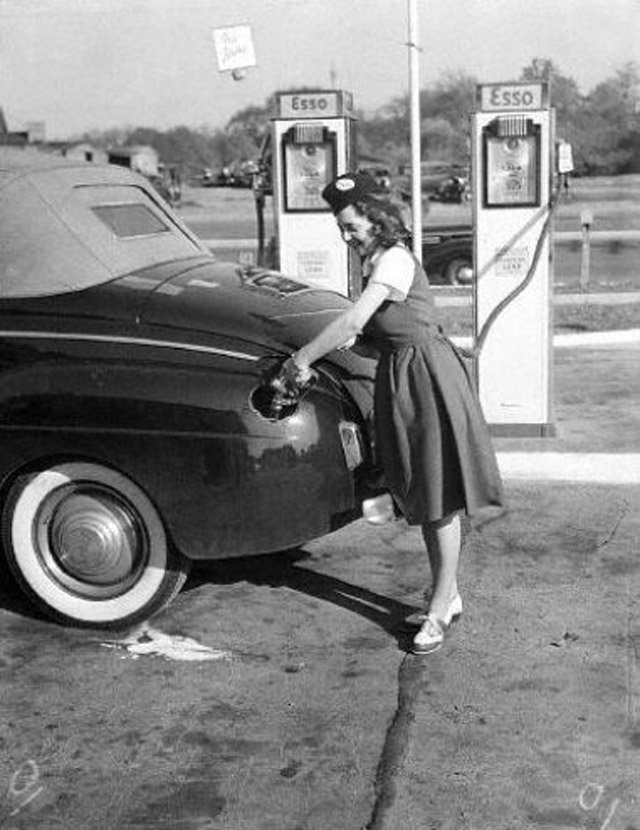
Exploring the Past: Vintage Photographs Reveal the Charm of Gas Stations in the US During the 1920s and 1940s_US Old Stories
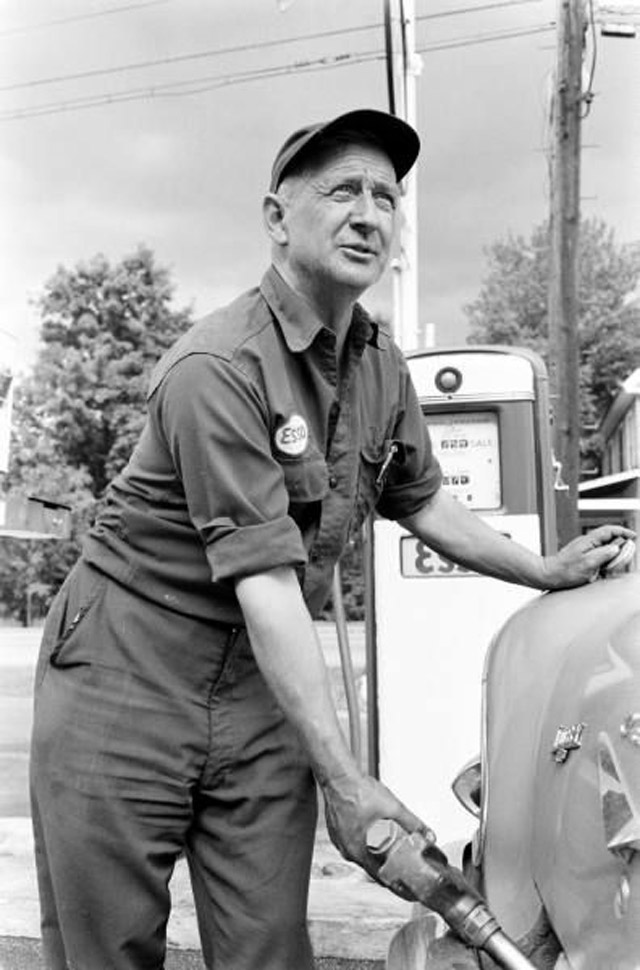
Exploring the Past: Vintage Photographs Reveal the Charm of Gas Stations in the US During the 1920s and 1940s_US Old Stories
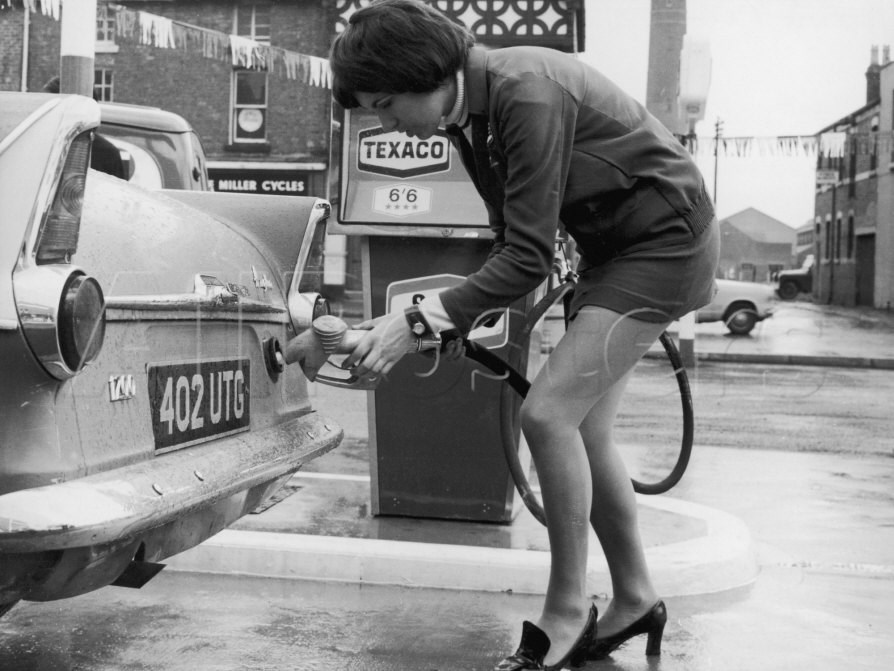
Exploring the Past: Vintage Photographs Reveal the Charm of Gas Stations in the US During the 1920s and 1940s_US Old Stories

Exploring the Past: Vintage Photographs Reveal the Charm of Gas Stations in the US During the 1920s and 1940s_US Old Stories
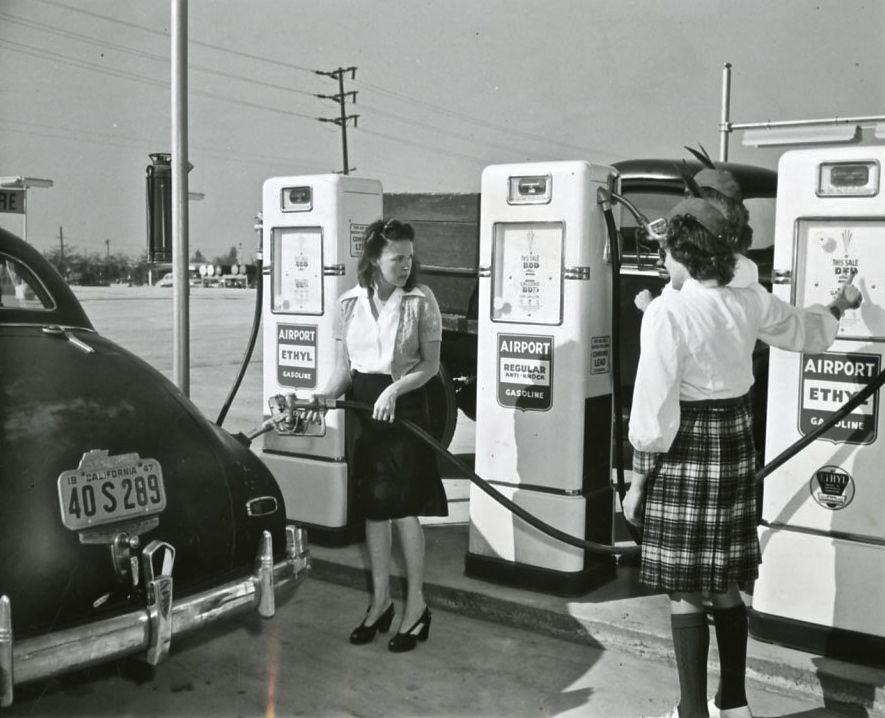
Exploring the Past: Vintage Photographs Reveal the Charm of Gas Stations in the US During the 1920s and 1940s_US Old Stories
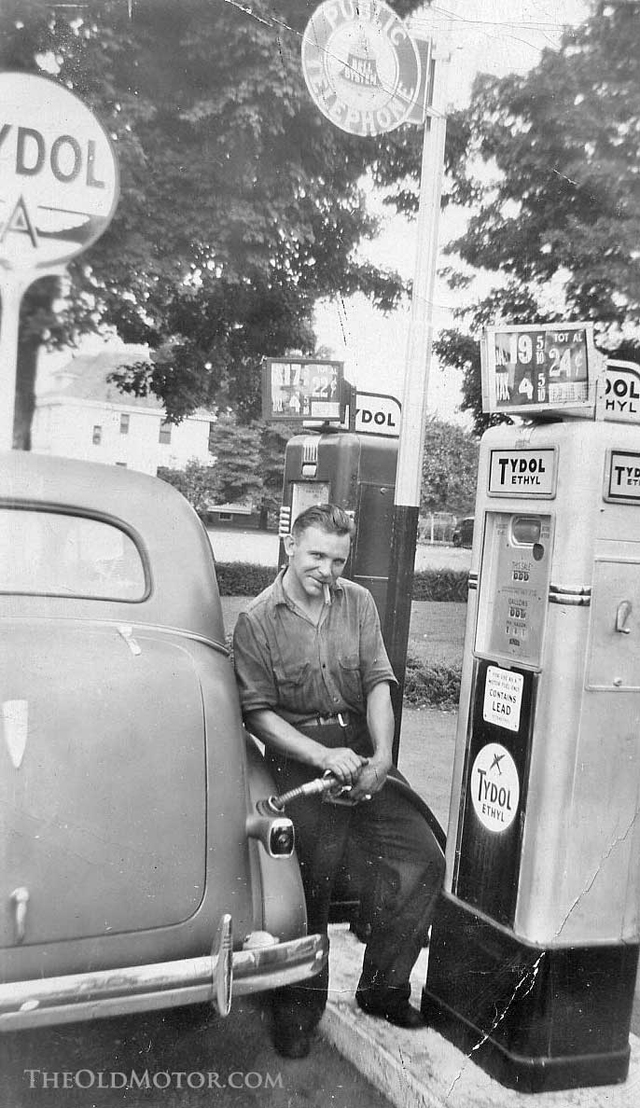
Exploring the Past: Vintage Photographs Reveal the Charm of Gas Stations in the US During the 1920s and 1940s_US Old Stories
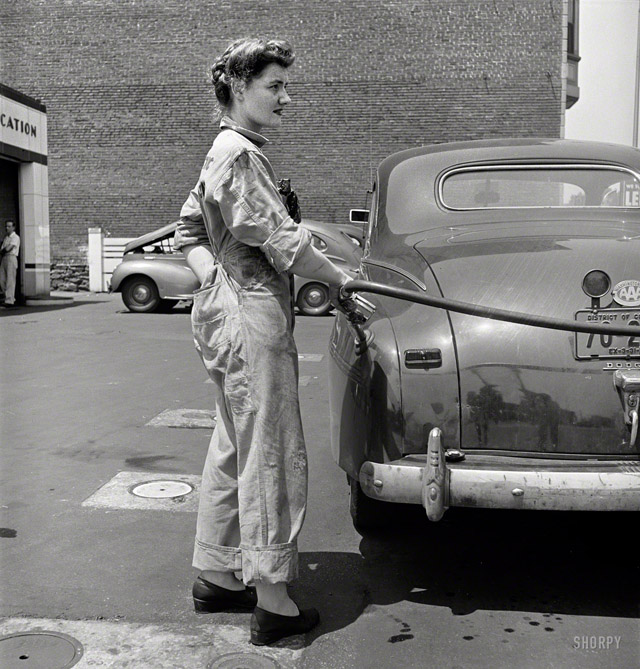
Exploring the Past: Vintage Photographs Reveal the Charm of Gas Stations in the US During the 1920s and 1940s_US Old Stories
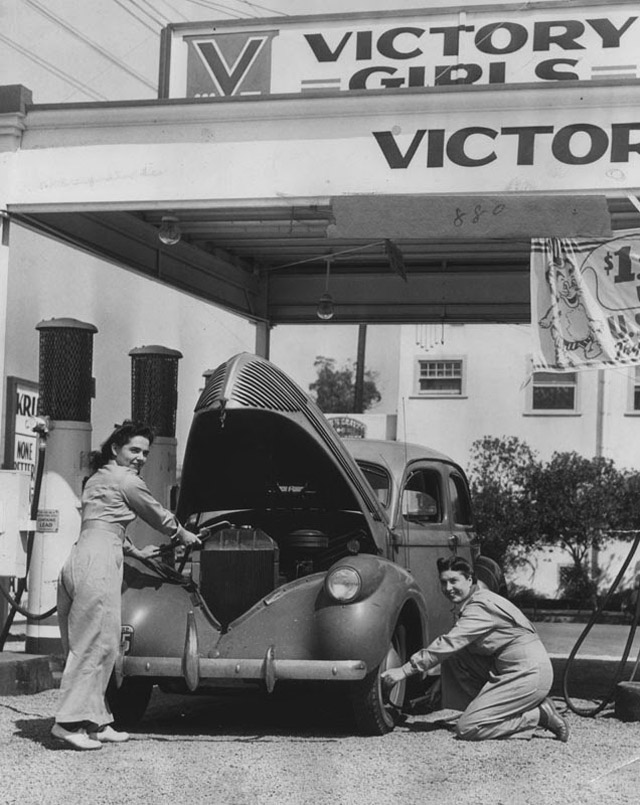
Exploring the Past: Vintage Photographs Reveal the Charm of Gas Stations in the US During the 1920s and 1940s_US Old Stories

Exploring the Past: Vintage Photographs Reveal the Charm of Gas Stations in the US During the 1920s and 1940s_US Old Stories
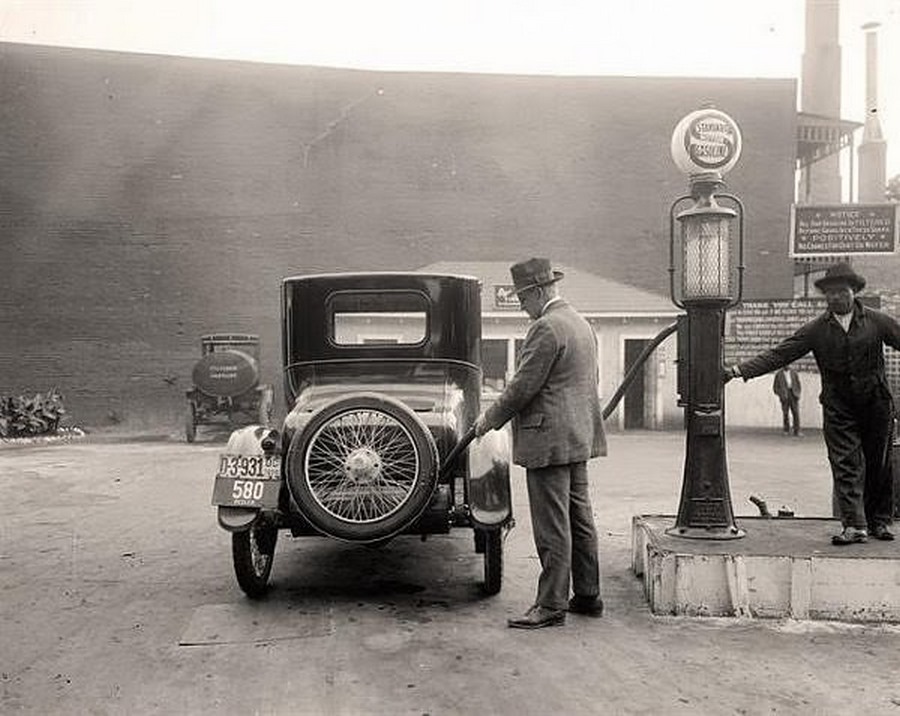
Exploring the Past: Vintage Photographs Reveal the Charm of Gas Stations in the US During the 1920s and 1940s_US Old Stories

Exploring the Past: Vintage Photographs Reveal the Charm of Gas Stations in the US During the 1920s and 1940s_US Old Stories
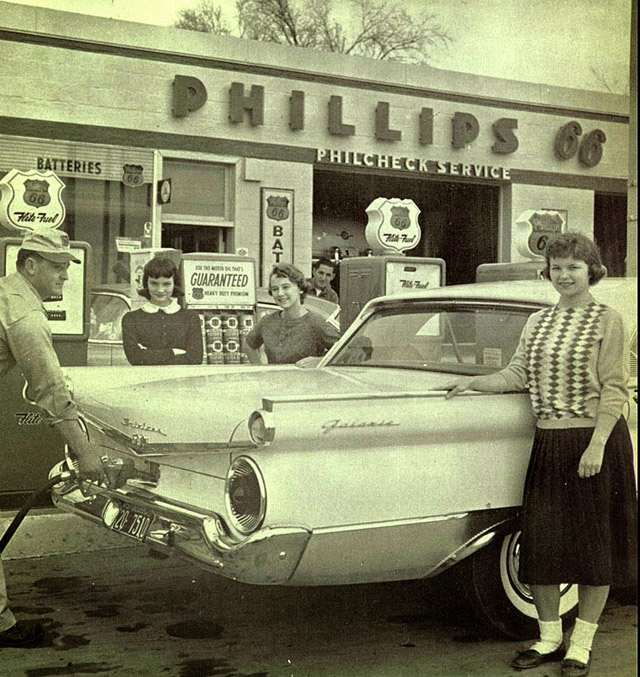
Exploring the Past: Vintage Photographs Reveal the Charm of Gas Stations in the US During the 1920s and 1940s_US Old Stories
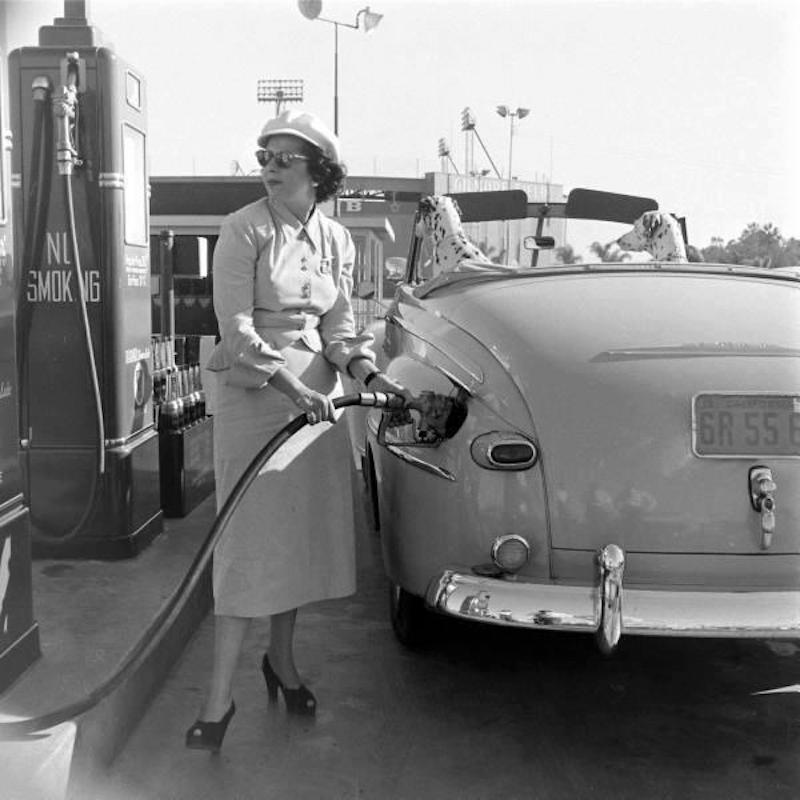
Exploring the Past: Vintage Photographs Reveal the Charm of Gas Stations in the US During the 1920s and 1940s_US Old Stories
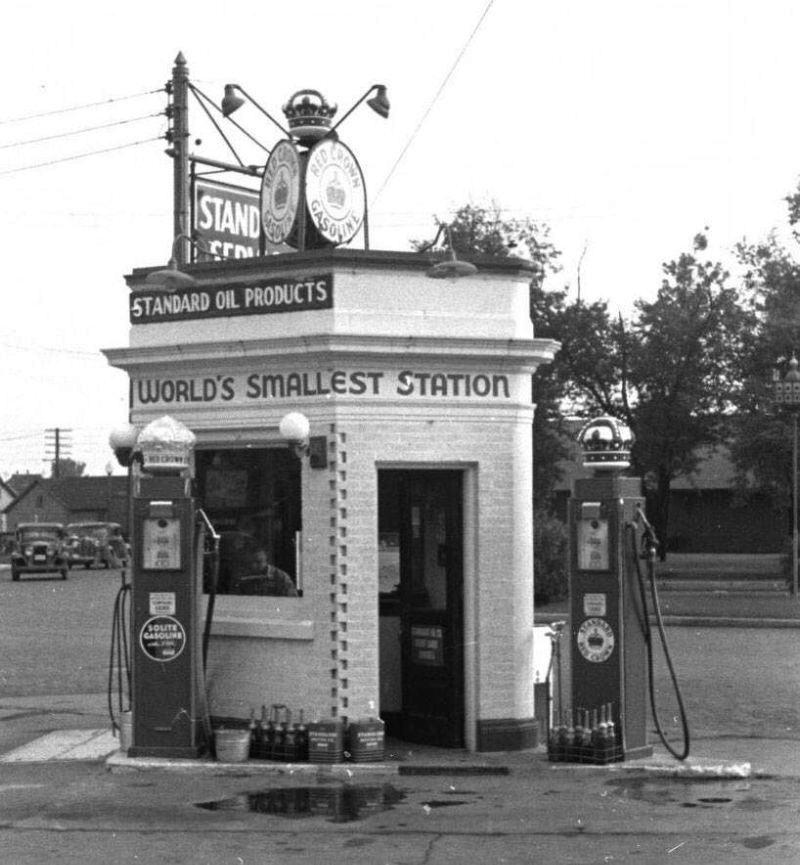
The “Smallest Gas Station in the World”, Detroit, 1930s.
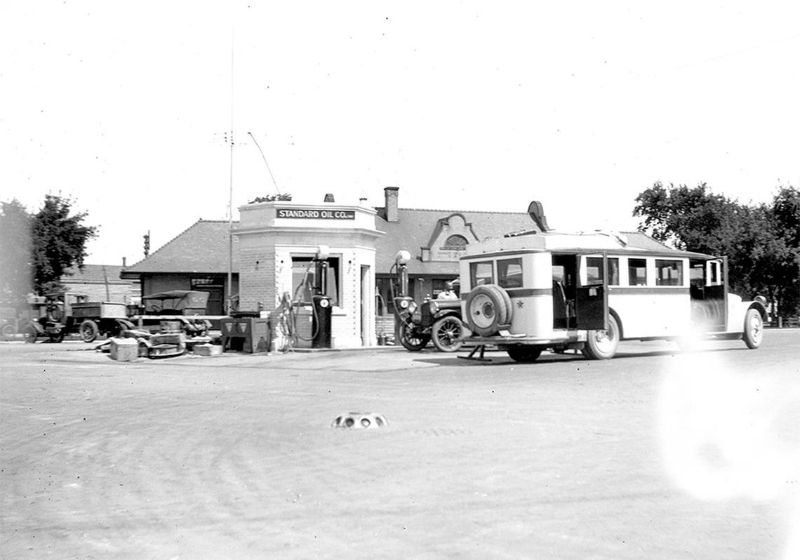
The smallest gas station in the world was located right in downtown Detroit Lakes, next to the bus stop. (Photo courtesy of Becker County Historical Society)
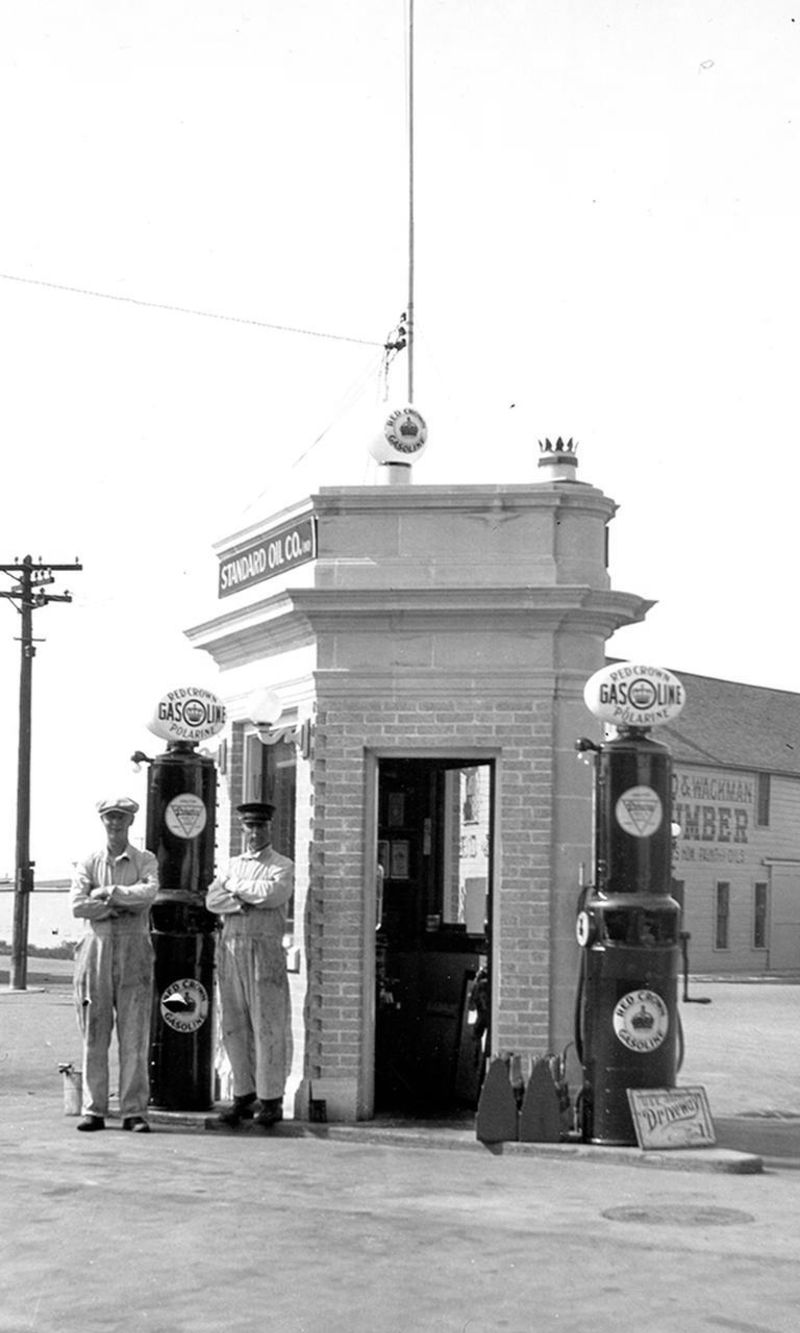
Brothers Roy and Lee Sauer, stand by the tiny gas station they helped start up with their father, J.M. Sauer. The brothers closed the station before heading off into the service. They tried to buy it afterwards, but with no luck. (Photo courtesy of Becker County Historical Society).

Jeff’s Texaco, Newburgh, New York Area, August 22, 1924. (Photo by Steve Hagy Collection.)

Log Cabin Inn, Cold Brook, NY, circa 1930s. (Photo by Steve Hagy Collection.)

Dennie’s Corner, Shafer Lake, Indiana, August 2, 1938. (Photo by Steve Hagy Collection.)
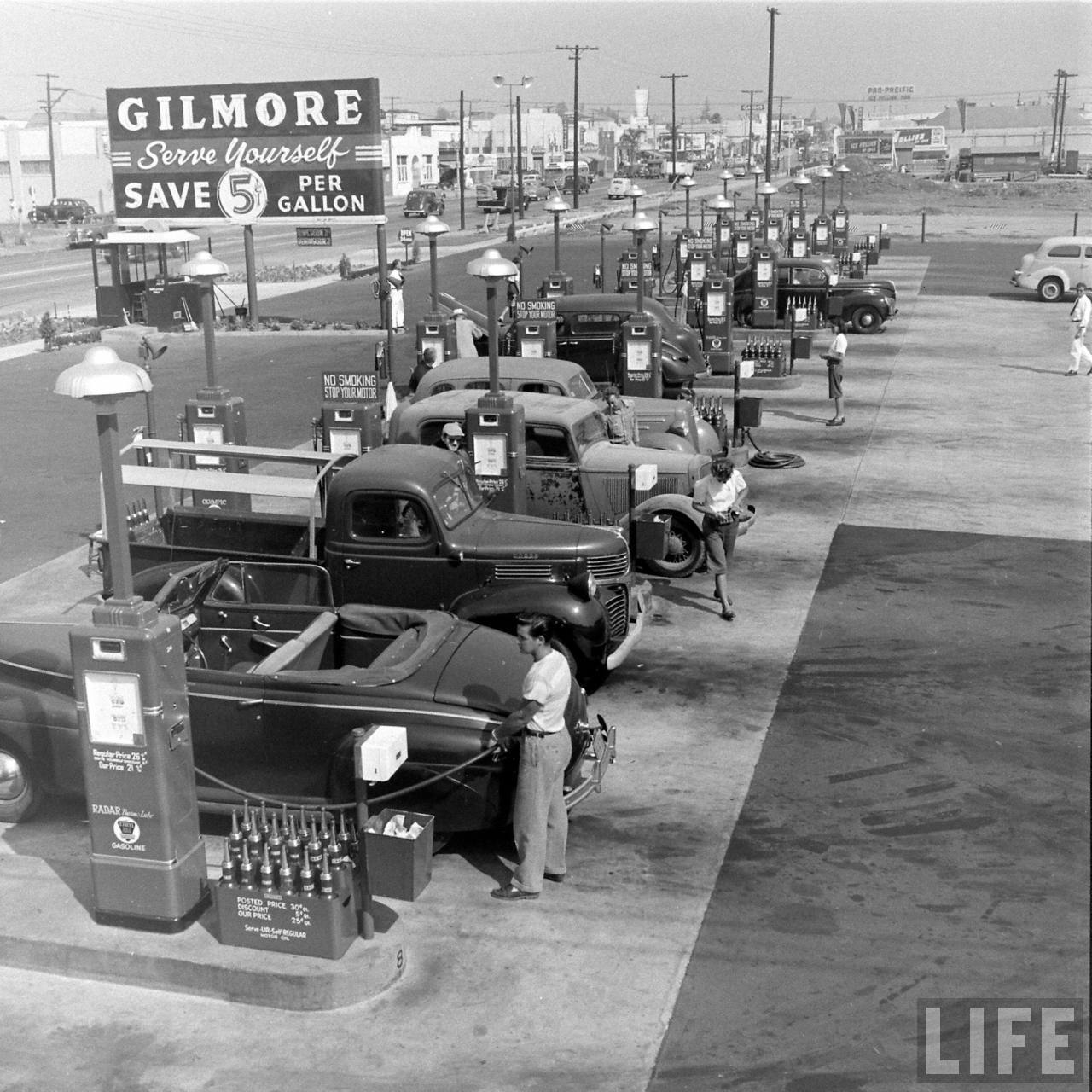
Gilmore Oil’s Gas-A-Teria, One of the First Self Serve Gas Stations in Los Angeles, 1948. (Photos by Allan Grant/LIFE archive)
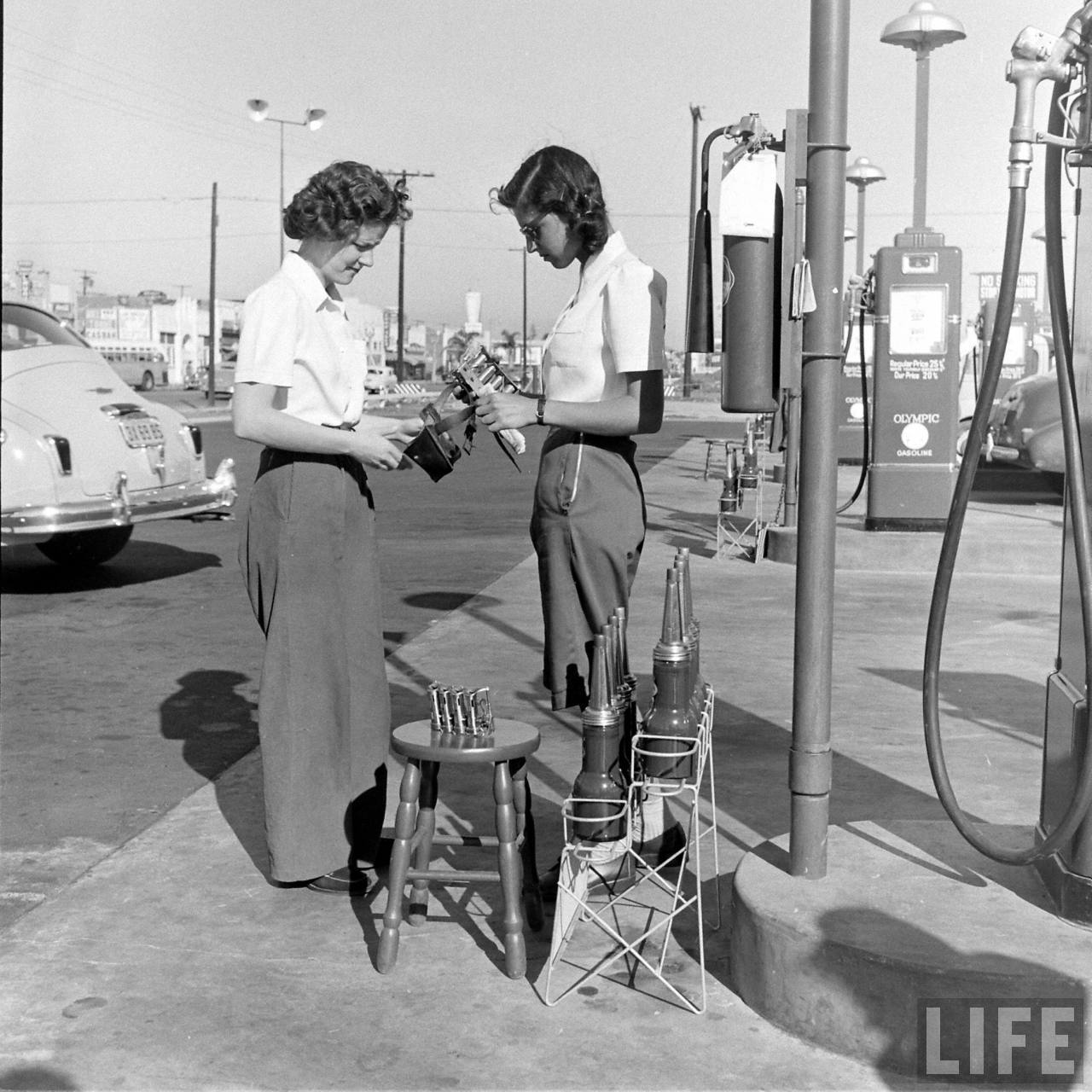
Gilmore Oil’s Gas-A-Teria, One of the First Self Serve Gas Stations in Los Angeles, 1948. (Photos by Allan Grant/LIFE archive)

Gilmore Oil’s Gas-A-Teria, One of the First Self Serve Gas Stations in Los Angeles, 1948. (Photos by Allan Grant/LIFE archive)
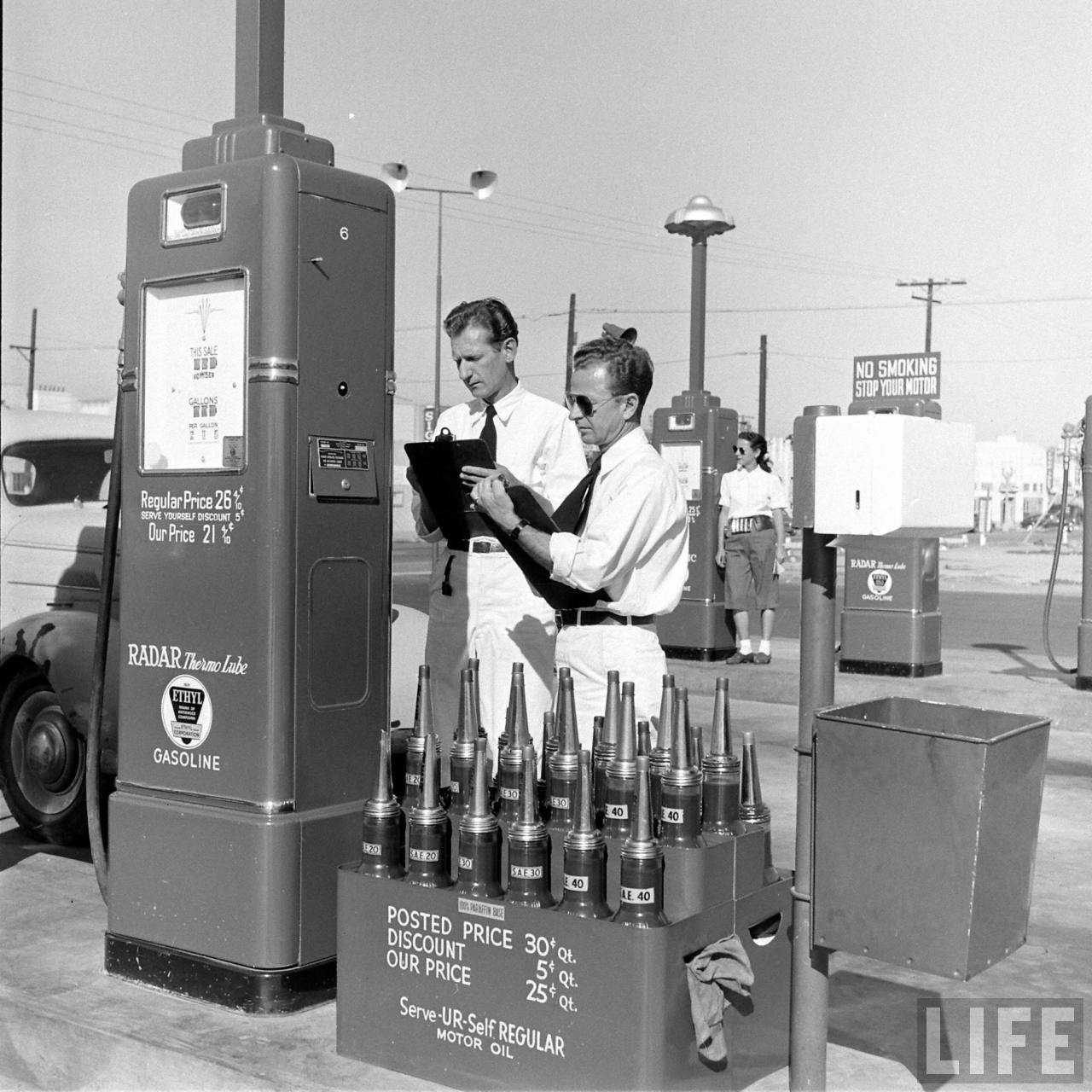
Gilmore Oil’s Gas-A-Teria, One of the First Self Serve Gas Stations in Los Angeles, 1948. (Photos by Allan Grant/LIFE archive)
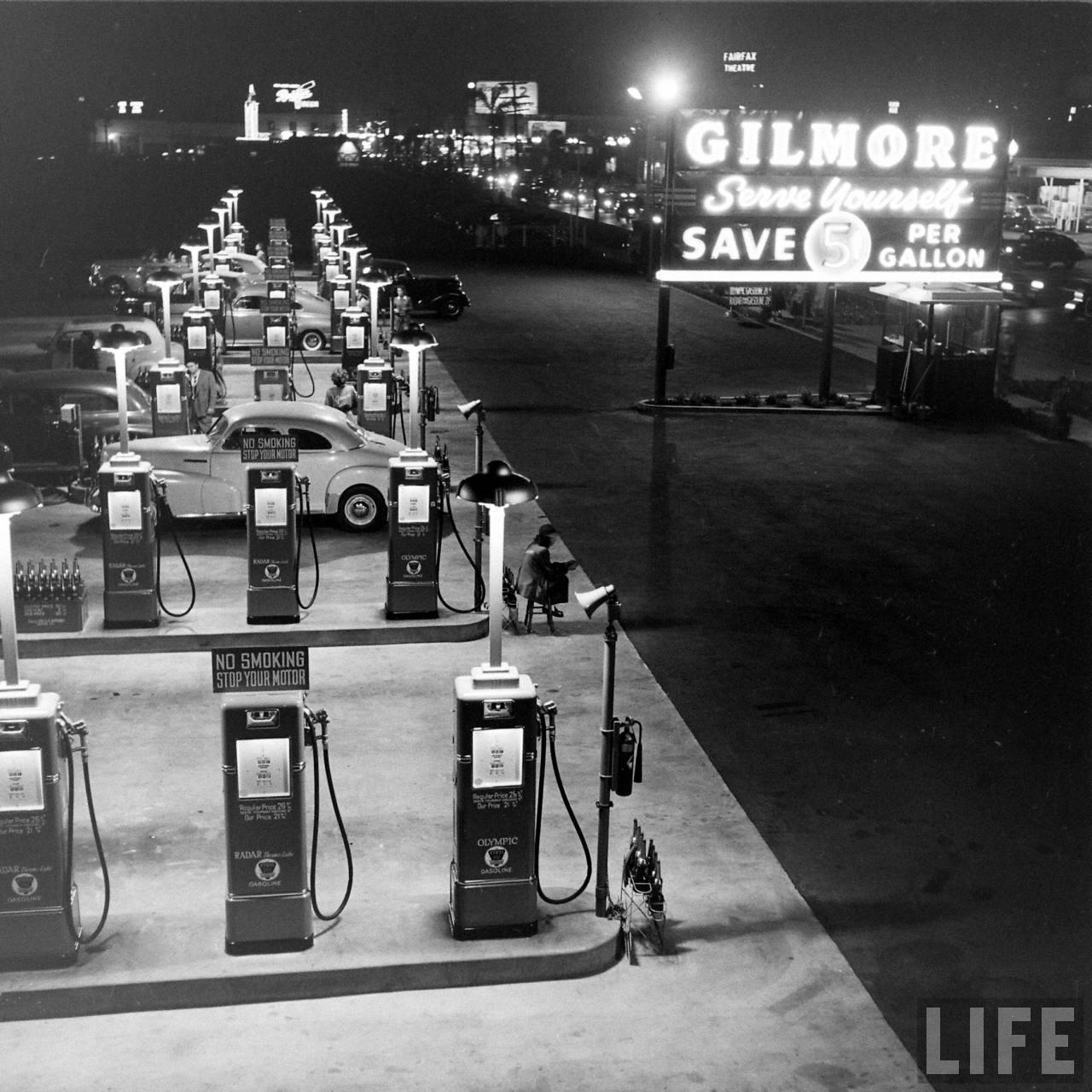
Gilmore Oil’s Gas-A-Teria, One of the First Self Serve Gas Stations in Los Angeles, 1948. (Photos by Allan Grant/LIFE archive)